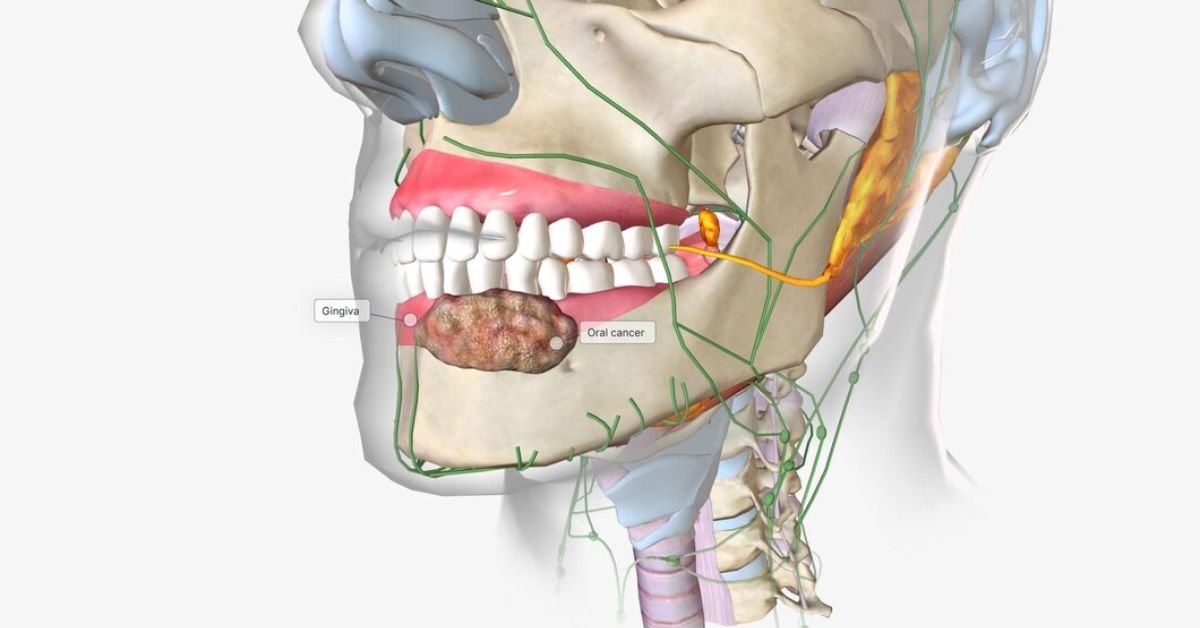Health
What is Bone Spicule: Are Bone Spicules Harmful?

Have you ever heard of bone spicule? They may sound like something out of a science fiction novel, but in reality, they are small bony projections that can cause big problems. In this blog post, we will delve into the world of bone spicules: what they are, how they form, and whether or not they pose a threat to your health. So buckle up and get ready to learn all about these tiny yet potentially harmful structures!
Causes of bone spicules
Bone spicule can develop for various reasons, with one common cause being trauma to the jawbone. When a tooth is extracted or lost, the body may react by forming bone spicules as part of the healing process. Additionally, poor dental hygiene and infections in the mouth can contribute to their formation.
In some cases, bone spicules can arise due to genetic factors or underlying medical conditions such as osteoporosis or Paget’s disease. These conditions affect bone density and structure, potentially leading to the development of spicules in the jaw.
Furthermore, orthodontic treatments like braces or retainers may also play a role in triggering bone spicule growth. The pressure exerted on the teeth and surrounding bones during these procedures can sometimes result in the formation of small bony protrusions.
Understanding the causes of bone spicules is crucial in determining appropriate treatment options and preventive measures to maintain oral health.
Symptoms and diagnosis
Experiencing bone spicules can lead to various symptoms that may vary depending on their location and severity. Some common signs include pain, swelling, and limited range of motion in the affected area. Individuals with bone spicules might also notice redness or warmth around the site of irritation.
Diagnosing bone spicules typically involves a physical examination by a healthcare professional who will assess the affected area for tenderness or abnormal bony growths. Imaging tests such as X-rays or MRIs may be ordered to get a clearer picture of the bones and identify any potential spicules present.
In some cases, a biopsy may be performed to confirm the presence of bone spicules and rule out other underlying conditions. It’s essential to seek medical attention promptly if you suspect you have bone spicules to receive an accurate diagnosis and appropriate treatment plan tailored to your specific needs.
Treatment options for bone spicules
When it comes to treating bone spicules, the approach can vary depending on the severity of the condition. In some cases, if the spicules are causing no symptoms or issues, a wait-and-see approach may be recommended by healthcare professionals. However, if treatment is necessary, options may include surgical removal of the spicule.
Surgery to remove bone spicules is typically performed under local anesthesia and involves carefully excising the affected area to alleviate any associated pain or discomfort. This procedure aims to prevent further irritation and inflammation caused by the presence of these bony projections.
After surgery, proper wound care and follow-up appointments with your healthcare provider are essential for optimal healing and recovery. It’s important to adhere to post-operative instructions provided by your medical team to promote successful outcomes and reduce the risk of complications.
In some instances, conservative treatments such as anti-inflammatory medications or physical therapy may also be recommended in conjunction with surgical intervention for comprehensive management of bone spicules. Always consult with a healthcare professional for personalized advice tailored to your specific situation.
The potential harm of bone spicules
Bone spicules, although small in size, can have significant implications on oral health. These sharp projections can cause irritation and damage to the surrounding soft tissues in the mouth. When left untreated, they may lead to inflammation and discomfort for individuals wearing dentures or braces.
Moreover, bone spicules can interfere with proper healing after dental procedures such as extractions or implants. In some cases, they may contribute to infections or delayed wound closure. Additionally, the presence of bone spicules can make it challenging for orthodontic treatment to progress smoothly.
It is essential to address bone spicules promptly through appropriate treatment options recommended by a dental professional to prevent further complications. Regular dental check-ups can help identify any potential issues early on and ensure timely intervention when needed.
By understanding the potential harm associated with bone spicules and taking proactive steps towards managing them effectively, individuals can maintain optimal oral health and overall well-being.
Prevention and management
Preventing bone spicules from forming is crucial for maintaining healthy oral hygiene. Regular dental check-ups can help identify early signs of gum disease and bone loss, which are common causes of bone spicule formation. Proper oral care, including brushing twice a day and flossing regularly, can also reduce the risk of developing these bony projections.
In terms of management, treatment options may vary depending on the severity of the condition. In some cases, simple measures like improving oral hygiene practices and using antibacterial mouthwash may suffice to prevent further complications. However, more advanced cases might require surgical intervention to remove the spicules and promote healing.
Staying proactive about your oral health by following good hygiene practices and seeking prompt treatment when necessary can go a long way in preventing and managing bone spicules effectively.
Conclusion
Bone spicules are small, needle-like structures that can form in the eye due to various underlying conditions. While they may not always cause symptoms or harm, it is essential to monitor them closely and seek medical attention if any changes occur. Early detection and appropriate treatment can help prevent potential complications and ensure optimal eye health. Remember to consult with an eye care professional for proper diagnosis and management if you suspect you have bone spicules. Stay proactive about your eye health to maintain clear vision and overall well-being.

Health
How Do Brain Tumors Develop, And What Are The Treatment Options?

The human brain is the crown jewel of evolution — and understanding its ailments is the first step toward protecting it
Brain tumors are among the most complex medical conditions. Their development can be influenced by a wide range of genetic, environmental, and lifestyle factors. For anyone diagnosed, finding the Best Neurologist near me becomes an urgent priority. Specialists like Dr. Sudhir Kumar, with years of expertise in neurology, provide hope and guidance to patients facing these challenges.
How Do Brain Tumors Develop?
The development of brain tumors typically involves multiple factors:
- Genetic Mutations: Changes in the DNA of brain cells can cause them to grow uncontrollably.
- Inherited Conditions: Disorders like Li-Fraumeni syndrome and neurofibromatosis can increase the risk.
- Environmental Exposure: Radiation exposure and prolonged contact with certain chemicals may elevate the risk.
- Age and Gender: Some types of brain tumors are more common in certain age groups or genders.
Types of Brain Tumors
Brain tumors are classified based on the type of cell involved and whether they are primary (originating in the brain) or secondary (spreading from other parts of the body).
- Gliomas: Tumors arising from glial cells; include astrocytomas, oligodendrogliomas, and glioblastomas.
- Meningiomas: Usually benign tumors developing from the membranes surrounding the brain.
- Pituitary Adenomas: Affect the pituitary gland; often disrupt hormonal balance.
- Medulloblastomas: More common in children, these tumors start in the cerebellum.
- Metastatic Brain Tumors: Spread from cancers elsewhere in the body (e.g., lung, breast cancer).
Diagnosis of Brain Tumors
Accurate diagnosis is critical and usually involves:
- Neurological Examination: Testing vision, hearing, balance, coordination, and reflexes.
- Imaging Tests: MRI and CT scans are essential for visualizing the tumor.
- Biopsy: Removing a tissue sample for lab analysis to determine tumor type and grade.
Under the care of Dr. Sudhir Kumar, patients benefit from precise diagnosis and thorough evaluation.
Treatment Options for Brain Tumors
Treatment strategies depend on the type, size, location, and grade of the tumor. Personalized treatment plans developed by experts like Dr. Sudhir Kumar often include:
Surgery
- Removing as much of the tumor as possible without damaging vital brain functions.
- Minimally invasive techniques are often preferred for faster recovery.
Radiation Therapy
- Using high-energy beams to destroy tumor cells.
- Often recommended when surgery isn’t possible.
Chemotherapy
- Employing drugs to kill cancerous cells.
- Can be administered orally or intravenously.
Targeted Therapy
- Focuses on specific molecules involved in tumor growth.
- Offers a precision approach with fewer side effects.
Supportive Care and Rehabilitation
- Occupational therapy, physical therapy, and speech therapy aid recovery.
- Mental health support is crucial for coping with emotional stress.
How to Choose the Right Neurologist?
Finding the right specialist can make a profound difference:
- Experience and Specialization: Choose someone like Dr. Sudhir Kumar, who specializes in neuro-oncology.
- Patient Reviews and Success Stories: Look for testimonials and success rates.
- Comprehensive Services: Ensure they offer diagnosis, treatment, and rehabilitation support.
- Communication and Comfort: You should feel heard, respected, and confident in their expertise.
Symptoms of Brain Tumors
Recognizing the symptoms of a brain tumor early can be lifesaving, allowing quicker access to expert care from specialists like the Best Neurologist near me or Dr. Sudhir Kumar.
Persistent Headaches That Worsen Over Time
Brain tumors can increase pressure inside the skull, leading to headaches that become progressively more severe and resistant to typical treatments.
Seizures Without a Previous History
A new onset of seizures, especially in adults, can be a strong indicator of abnormal electrical activity caused by a brain tumor.
Difficulty in Speaking or Understanding
Tumors affecting language centers can disrupt a person’s ability to speak clearly or comprehend spoken and written language.
Balance and Coordination Issues
When tumors develop in areas controlling movement, they can cause dizziness, difficulty walking, or clumsiness.
Personality or Behavior Changes
Brain tumors can alter mood, personality, and behavior by affecting regions responsible for emotions and judgment.
Vision or Hearing Disturbances
Pressure or tumor growth near the optic or auditory nerves can result in blurred vision, double vision, hearing loss, or ringing in the ears.
The Emotional Stages After Diagnosis
Many patients go through emotional stages similar to grief. These typically include:
- Shock and Denial: The initial reaction is often disbelief. Patients may feel numb and struggle to absorb the diagnosis.
- Fear and Anxiety: Worry about surgery, treatment side effects, and the future is very common.
- Anger: Some may feel frustrated or angry, questioning why this is happening to them.
- Sadness and Depression: Feelings of hopelessness or persistent sadness can emerge, making daily life feel overwhelming.
- Acceptance: Over time, many patients come to terms with their condition and focus on treatment and living life fully.
Conclusion:
Brain tumors are daunting, but early detection and expert care offer a pathway to hope and recovery. Whether you are seeking a diagnosis, a second opinion, or specialized treatment, finding the Best Neurologist near me is the first step. Dr. Sudhir Kumar stands out as a trusted name in neurology, offering patients world-class care backed by years of experience. Take the first step toward healing today — your brain deserves nothing but the best.
Health
All the Risks Posed by a Drunk Driver

A drunk driver turns any road into a danger zone. Innocent lives hang in the balance with every reckless turn of the wheel. Children walk home, workers commute, and families run errands, all vulnerable to one person’s careless choice to drive impaired. The consequences don’t wait. Crashes happen in seconds, leaving shattered glass, broken bones, and lives forever changed.
Victims often face more than physical pain. Financial strain, lost wages, and emotional trauma hit hard. In these moments, the drunk driving accident attorneys at Pribanic & Pribanic step in with fierce determination. They hold reckless drivers accountable and pursue justice for those in the wreckage.
Impaired Judgment on the Road
Alcohol impairs the brain’s ability to make quick and sound decisions. A drunk driver often misjudges speed, distance, and traffic signals. They ignore stop signs, speed through intersections, and their attention drifts. These reckless choices place every driver, cyclist, and pedestrian at immediate risk. School zones, highways, and suburban streets all become danger zones when alcohol controls the wheel.
Slower Reaction Times
A drunk driver reacts late, braking slows down, and swerving comes too late. That split-second delay changes everything. A child running into the street, a sudden stop from the car ahead, or a lane change from another driver requires instant action. Alcohol strips away that urgency, and crashes follow.
Rear-end collisions, sideswipes, and head-on crashes rise sharply under the influence. Alcohol dulls the senses, blocks signals from the eyes to the brain, and cuts off a person’s ability to respond in time. That delay alone often leads to fatalities.
High Risk of Injury or Death
Drunk drivers often cause crashes with greater force and severity. They drive too fast, miss red lights, and veer into oncoming traffic. This recklessness leads to devastating injuries. Broken bones, brain trauma, spinal cord damage, and internal bleeding result from violent impacts.
Pedestrians suffer the worst. A drunk driver often fails to see crosswalks or notice those walking at night. Bicyclists receive no warning, and other drivers experience violent rollovers or become trapped in crushed vehicles. Emergency responders rush to scenes that never should have happened.
Legal and Financial Fallout
A drunk driver risks more than physical harm. Legal consequences follow fast, and arrests happen on the spot. License suspensions, jail time, and hefty fines pile on. Repeat offenses bring harsher punishment. These consequences don’t erase the damage but serve as a reminder of the danger posed.
Insurance rates skyrocket or disappear entirely. Vehicle damage, medical bills and legal fees stack up fast. Many drunk drivers struggle with the long-term cost of their actions, both financially and personally. They lose jobs, and relationships break. Rebuilding life takes years if it ever fully happens.
Emotional Devastation for Victims
Survivors of drunk driving crashes often carry invisible scars. Anxiety, depression, and post-traumatic stress disorder linger long after physical wounds heal. Families grieve lost loved ones, children lose their parents, and parents lose children. Weddings, birthdays, and milestones pass with empty chairs. The ripple effect stretches across generations.
Victims struggle to find peace while watching others walk free. The pain doesn’t fade, memories of the crash replay constantly, sleep becomes rare, and trust in the world feels lost. The damage reaches far beyond a single collision.
Every drunk driver brings a storm of danger to the road. They don’t just break the law, they shatter lives. One decision to drive under the influence risks everything for everyone nearby.
Health
The Top Health Benefits of Goat Milk for Your Body and Skin

Are you looking for a simple and natural way to feel better every day? Goat milk could be just what you need. It’s smooth, gentle, and full of healthy things for your body and your skin.
If you want a drink that helps you feel stronger, look better, and live well, give goat milk a try today.
It’s easy to add to your day, and the benefits might surprise you. Continue reading to discover everything you need to know.
Easier to Digest Than Regular Milk
Many people have trouble with cow’s milk. It can cause stomach pain, gas, or bloating. Some feel sick after drinking it.
Goat milk is different. It has smaller fat particles and a different kind of protein. That makes it easier for your body to break it down.
You don’t feel as full or heavy after drinking goat milk. It is gentler on your stomach, even if you are sensitive to dairy.
Some people who cannot drink cow’s milk at all find they can enjoy goat milk without any problems. It may not work for everyone, but for many, it makes a big difference. That means less worry after meals and more comfort throughout the day.
Goat milk gives your body the nutrients it needs, without making you feel bad.
Helps Build Strong Bones and Teeth
Goat milk is rich in calcium, which helps keep your bones and teeth strong. But it also has other important minerals like magnesium and phosphorus.
These work together in your body to support your bones and help prevent them from getting weak or breaking. That’s not just important for kids.
Grown-ups need strong bones too, especially as they get older.
Drinking goat milk often helps keep your teeth healthy as well. Strong teeth mean fewer trips to the dentist and less pain or problems with eating. The nutrients in goat milk help your whole body stay firm and balanced from the inside out.
Full of Vitamins That Help You Shine
Goat milk has many vitamins that your body needs every day. It’s full of vitamin A, which is good for your eyes and your skin.
It also has vitamin B2, or riboflavin, which helps turn the food you eat into energy. That means more strength and less tiredness during the day.
Vitamin D in goat milk helps your body take in more calcium, making your bones even stronger. There are also vitamin C and other antioxidants that help fight off sickness and keep your immune system strong. These vitamins work like a team to keep you feeling and looking your best.
Soothing for Sensitive Skin
If your skin gets dry, itchy, or red, goat milk can help. Many people use goat milk in soaps and lotions. It has gentle fats and oils that clean without taking away the natural moisture your skin needs. That means your skin stays soft and smooth after each wash.
People with eczema, acne, or other skin problems often say goat milk helps calm their skin. It’s not full of harsh chemicals like many other products. Instead, it works with your skin to heal and protect it. Whether you use it on your face, your hands, or your whole body, goat milk can leave your skin feeling fresh and clean.
Supports a Healthy Tummy
Your stomach has tiny living things called good bacteria. These help your body digest food and stay healthy.
Goat milk helps feed these good bacteria. That helps your tummy work better and keeps you from getting sick as often.
A healthy gut can also help your brain. You may feel happier, more focused, and more relaxed when your belly is in balance.
If you ever feel bloated or upset after meals, goat milk might help settle your stomach. It’s a natural choice that helps support your digestion, day after day. And it doesn’t need any extra sugar or fake ingredients to do its job.
It works just as it is, straight from the source.
Safe and Gentle for All Ages
Goat milk is a great choice for kids, teens, adults, and even older people. It is soft on the stomach and full of nutrients for growing bodies. For older adults, it supports bone health and helps keep muscles strong.
Everyone can benefit from the natural fats and vitamins in goat milk. It’s a smart way to care for your body at every stage of life.
Because it’s so mild, goat milk is also a good choice for people who have food troubles. It gives them another option when other drinks or foods do not sit well. It is also useful in cooking and baking, giving meals a rich flavor without upsetting the stomach.
Found Close to Home
You don’t have to go far to find fresh and local options. You can find all-natural goat milk in Hanford, California, where farmers care for their animals and produce clean, simple milk that your body will thank you for. This kind of milk is not just better for you-it’s also better for the environment and your local community.
When you choose local goat milk, you are supporting farms that work hard to give you the best product possible. It’s milk you can trust and feel good about using every day.
A Natural Beauty Secret
Goat milk is not only for drinking. Many people use it as part of their beauty routine. It makes great soaps, shampoos, and body creams. Because it is rich in gentle fats and vitamins, it helps your skin stay smooth and soft. It also helps with problems like redness, dryness, or flaking.
Even your hair can benefit from goat milk. Some people use it in shampoo to add shine and strength.
Others use goat milk in face masks or scrubs to brighten their skin and give it a soft glow. No matter how you use it, goat milk is a gentle way to treat your body right.
Choose Goat Milk for a Healthier Life
Goat milk is a powerful, natural way to care for your body and your skin. It’s easy to digest, full of helpful nutrients, and gentle on even the most sensitive people. It helps build strong bones, supports your tummy, and gives your skin a fresh, clean feel.
-

 Entertainment12 months ago
Entertainment12 months agoSandra Orlow: Exploring the Life and Legacy of a Cultural Icon
-

 General8 months ago
General8 months agoBaby Alien Fan Bus: Watch Parts 2 & 3 on Twitter, Reddit!
-

 General8 months ago
General8 months agoDiana Nyad & Bart Springtime: A Swim to Success
-

 Business1 year ago
Business1 year agoTex9.Net Crypto: Fast, Secure International Money Transfers with Competitive Rates
-

 Business1 year ago
Business1 year agoWhat is O Farming: How to Make Money Online and Its Start-Up Benefits
-

 Business1 year ago
Business1 year agoSnapchat Planets: Exploring Your Streak Universe
-

 General10 months ago
General10 months agoDeeper Dive into myfavouriteplaces. org:// blog
-

 Business1 year ago
Business1 year agoFintechZoom Apple Stock: Real-Time Insights and Expert Analysis